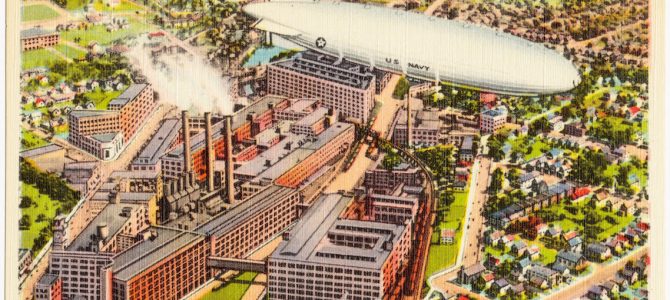
AKRON – The 2016 presidential election has revealed, among many other things, a simmering societal volatility across the American electorate. You can see it in the preemptive accusations about a “rigged” election from Donald Trump and his supporters—a claim the GOP nominee repeated in a speech at Gettysburg, Pennsylvania, over the weekend—or in the revolt against Hillary Clinton during the Democratic primaries in favor of Bernie Sanders’ insurgent campaign.
You also see it in buried data points like this one from a recent Reuters poll: “About one in five Democrats said they would protest if their candidate loses. Slightly fewer Republicans said they would do the same. Fewer than one in 10 Democrats said they are prepared to take up arms in opposition compared to fewer than one in 20 Republicans.”
What’s important about those figures is not that they’re so high, but that they’re bipartisan. The anger and frustration of ordinary Americans across the political spectrum took the political and media elites by surprise this year largely because our elites have long been content to ignore the struggling towns and cities in middle America.
Here in Ohio—a state that Trump must win and which, according to the latest polls, is more or less a coin flip right now—the cracks in civil society are palpable and sometimes harrowing. Not that Ohio is some dystopian wasteland, but within many of its cities there are in effect two parallel societies: one that’s struggling, with some success, to prosper despite long odds and the many disadvantages of deindustrialization, and one that’s hollowed out and giving in to despair.
In white, working-class communities especially, support for Trump has united these parallel societies. Even in heavily Democratic Summit County, Ohio, Trump won more votes than Clinton in the primaries. While it remains pretty evenly split between Clinton and Trump, his appeal here is much the same as it is in other Rust Belt cities: he’s the candidate who tells the truth, hearkens back to a better time, denounces political elites of both parties, and promises to make their cities great again.
Decline Looks Like a Mass Heroin Overdose
A steady rain was falling when I drove into Akron, the seat of Summit County, on a recent weekday afternoon. I’d never been to this city of nearly 200,000 just south of Cleveland, once known as the “rubber capital of the world” because of the four major tire companies headquartered there. By the 1990s, Goodyear was the only tire manufacturer still based in Akron. You know the story.
I had just enough time to find lunch before meeting with the director of a drug treatment center. Hoping to find something besides fast food, I did a quick iPhone search and saw a sub sandwich shop nearby. I followed the directions, but the closer I got it became clear there were no sandwich shops, or any kind of shops, on this street. There was nothing but boarded-up storefronts and broken windows.
Later, I realized I hadn’t been far from the campus of the University of Akron and the clean, well-kept downtown, anchored by Akron’s impressive minor league baseball stadium and the shops and restaurants that line Main Street.
This is to say that Akron is a schizophrenic place: on the one hand, it’s doing okay and forging a new economy after decades of industrial decline. On the other hand, it’s in the middle of a heroin and opioid epidemic. Twenty-one people overdosed there on a single day in July, using heroin that was cut with a synthetic painkiller called carfentanil—an elephant tranquilizer. Over the ensuing three weeks, 247 people would overdose in Akron, and dozens of them would die.
The dramatic spike made national headlines, and Akron was singled out as ground zero of the growing national heroin epidemic. Police and emergency medical services are scrambling to keep up, and drug treatment centers like Oriana House now have months-long waiting lists.
The man I met with that rainy afternoon is Bernie Rochford, the executive vice president of Oriana House, who says he started seeing an uptick in heroin and opioid cases about four or five years ago, but that, “over the past two or three years, it’s exploded,” he says. “Our clients have a greater desire to use, and we’re seeing them come up with novel ways to circumvent our treatment programs.”
As a result, more of them are dying. Heroin laced with carfentanil is 10,000 times stronger than morphine, and too strong of a dose will kill you. Rochford says his staff takes it hard because so many of the people they work with are dying now. Some staffers have quit because it’s too much. One woman went to work at a rape crisis center instead.
“Vietnam pales in comparison to the number of people dying from opioids,” Rochford says—and he’s right. The introduction of powerful opioids like carfentanil has made things much worse. According to Rochford, Akron’s coroner had to get a sample of the stuff from the Cleveland Zoo this summer to confirm that it was indeed what was making heroin so deadly in Akron.
The Two Akrons
The heroin and opioid scourge isn’t unique to Akron, of course. But it’s hitting predominately white, blue-collar communities like Akron all across the country—cities that once prospered thanks to a middle class sustained by industrial manufacturing jobs. The decline and fall of those industries, and along with them the middle class, has brought misery to these cities and towns in all its too-familiar forms: grinding unemployment, welfare dependency, crime, drug addiction.
But all isn’t lost. In the place of the old steel mills and rubber factories, a high-tech manufacturing sector is taking shape in northeastern Ohio, revitalizing some cities and suburbs with products made for an export market. This is good news, but it comes with a catch: the new manufacturing is creating jobs, but they’re mostly for high-skilled workers—and far fewer of them.
“This new economy in Akron is not large enough to sustain a city of this size,” says Dr. John Green, a political science professor at Akron University. “The question remains, what will be the economic base? We’ll need much more economic growth here to get the standard of living back to what it was.”
Green has written extensively on the role of religion and culture in American political life, and he says economic decline over the past 40 years in places like Akron has eroded the old social order in almost every conceivable way.
“You hear a lot of nostalgia in these communities,” he says. “The notion that there was a time when you could have a good life with a high school education, and your children would have a better life. That expectation was tied to a sense of identity, of who they were and their place in the social order.”
That social order is all but gone now, and the jobs and wealth created by high-tech manufacturing in northeastern Ohio disproportionately accrue to people who are less parochial and more cosmopolitan. They’re also more mobile, and often have few if any ties to the community.
The University of Akron, for example, is one of the only schools in the country that offers PhD fellowships in something called “biomimicry,” which is basically the industrial application of nature (say, robot components based on insects, or studying the structure of leaves to develop new kinds of polymers). These fellowships usually have a corporate sponsor, often one of the high-tech industrial firms in the Akron area.
I met two such graduate fellows in a coffee shop downtown. They were both young women—and they were both foreigners. One was Iranian, having come to the United States by way of Finland. The other was from Ireland. Both were new to America; Akron was the only place they’d ever lived in the states.
No One Here Is Happy About the Election
Among those who do have strong ties to the community, Akron’s fortunes today are a matter of perspective. Diamond Deli on Main Street is as close to an institution as you’ll find here. Chuck Magilavy founded the iconic eatery with his sister 20 years ago, when Akron was in much worse shape than it is today. Magilavy is 60 years old, and he runs the place now with his brother and his two adult sons. He says Akron is “a great place to live,” and thinks it’s doing far better than it was when they opened in the 1990s. In many ways, he’s right.
But his 32-year-old son, Brett, isn’t as effusive. He says the drug epidemic has touched everyone in Akron. “Everyone knows someone who’s overdosed or died,” he says—including him. He admits the downtown is doing better, but doesn’t think the area at large is. Where a father sees economic renewal, his son sees social collapse. They’re both right.
They also both decline to discuss politics, saying only that they can’t believe the election has come down to a choice between Trump and Clinton, and that since their customers are split about 50-50 between the two, they try not to talk politics at all.
The political ambivalence here is tangible. Both Trump and Clinton signs dot yards throughout Akron. Although a recent statewide poll showed Clinton with a slight lead, it also found that one in five Ohio voters (21 percent) are undecided or voting third party.
At a bar down the street from Diamond Deli I meet two men that exemplify the political ambivalence of Ohio. They are both gay. One is a Democrat, and one is a Republican. The Democrat, 66-year old David Culp, is a retired social worker who says he’s voting for Hillary Clinton—not because he thinks she’ll be a good president but because he thinks Trump is “an evil person.”
Still, he says he understands why many of his friends, including women and other gay men, are voting for Trump. “It’s rooted in disappointment with our government,” Culp says. “Politics just isn’t authentic, it’s fake. And people are tired of others getting a free ride, and they see Trump as someone who will change the direction of our country.”
The Republican is John Ferguson, age 48, who works as a custodian for Akron’s public schools. He lost his business of 18 years, a chemical company, during the Great Recession in 2008. Ferguson was once a Democrat but he and his long-time partner switched to the GOP 20 years ago. “I’m not thrilled about Trump,” he says, “but I’m happy to see someone throw a wrench in the works.”
Ferguson and Culp tell me they disagree about almost everything political (the bartender wouldn’t even let them talk to me in the bar because they have a habit of getting in loud political debates there). But they do agree about some things. They agree that political correctness is a huge problem. They agree that neither candidate cares much about gay rights or gay marriage—but they also resent that, as gay men, they’re expected to align with the Democrats.
“One thing I know we agree on for sure,” Ferguson says, “is that the major political parties don’t represent us.”









